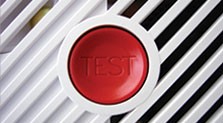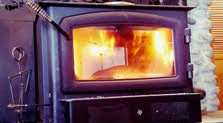Attics are an easy aspect of a home to forget about, especially since they are usually dark, dusty and out of the way; however, they play an important role in the health of your home. Attic insulation and ventilation is necessary for temperature regulation of the home and moisture control in the attic.
Ensuring adequate attic insulation is an easy way to increase the energy efficiency of a home while saving money. An acceptable amount of insulation is approximately 15 inches of blown in fiberglass or fiberglass batts. If an attic has less than10 to 15 inches of insulation, simply installing additional blown in or fiberglass batt insulation will aid in cutting heating and cooling bills.
Ventilation is an essential aspect of an attic. As homeowners cook, do laundry, bathe, and use humidifiers, the moisture from these activities can work its way up through the house and into the attic. When moisture meets the cooler air in the attic, especially in the winter months, it creates condensation or frost. This moisture can lead to things like mold and damage of attic insulation, framing and roof sheathing.
Soffit and gable-end venting allow for air to enter in through the bottom or sides of the attic. In regards to soffit venting, ensure that there are vent chutes in the attic; vent chutes hold the insulation back from the roof edges and allow for better air movement into the attic. Also important are roof vents or ridge vents to allow for air movement through the tops of roof peaks. A standard gable attic generally requires approximately one square foot of ventilation for every 300 square feet of attic space, and alternatively one square foot of ventilation for every 150 square feet of attic space in cathedral ceilings.
If, after ensuring sufficient ventilation is present, there is concern about high humidity levels, installing an attic fan can also help to reduce temperature and moisture levels in the attic. As a side note, keeping an attic area cooler in the summertime can also help to extend the life of your roof.
Attics that have proper ventilation and insulation can still have moisture problems. Common sources of moisture in attics are bathroom exhaust fans, clothes dryers, and kitchens exhaust fans that exhaust into the attic. Exhaust systems should never terminate in the attic, but rather terminate at the exterior of the building, with appropriate vent terminations. Other sources of attic moisture that should be dealt with include the storage of large volumes of fire wood inside a house, humidifiers, crawlspaces that lack ground moisture barriers, plumbing leaks, and failing to run bathroom and kitchen exhaust fans when necessary.
Lastly, if the attic temperature gets too warm, there is a chance that the snow on the roof could melt and form ice dams on the roof. Ice dams increase the risk of roof leaks, water damage, and mold. Thus, it is also important to have proper ventilation and adequate insulation to help prevent your attic from getting too warm from lost heat in the winter. Insulation and ventilation in attics is often overlooked but remains an integral part of a healthy home. If in doubt about your attic, or simply have a question, contact your local home inspector for recommendations.













